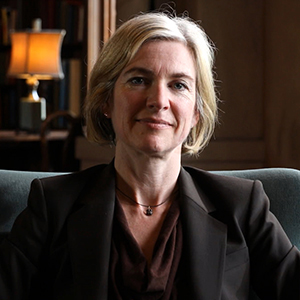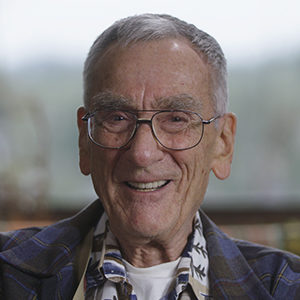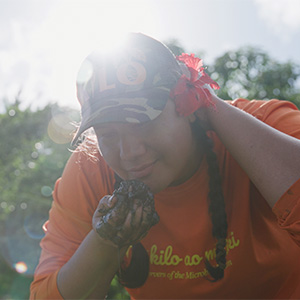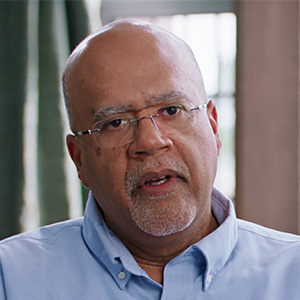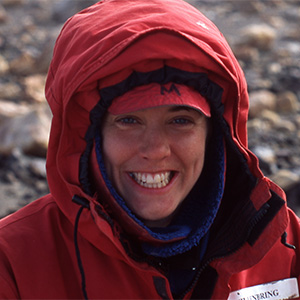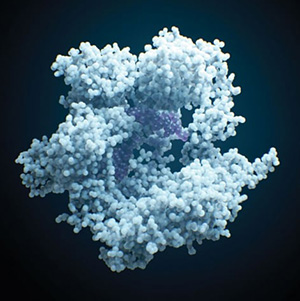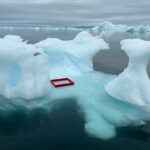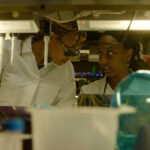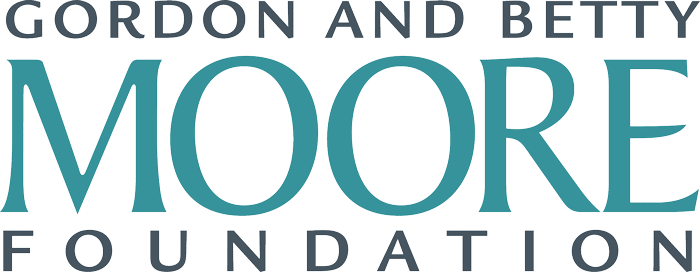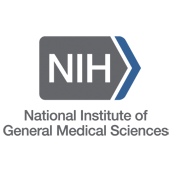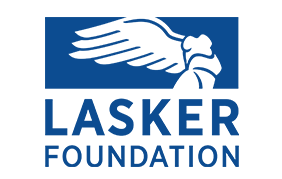Evelyn Witkin, Ph.D.: Well, when I started my graduate work in genetics the big question was what on earth is this gene? How can it do these amazing things that it does? And it was a complete mystery. That was the big question, that was the question that attracted me to genetics and that made me want to spend my life trying to get an answer or get part of the answer.
By that time, a lot was known about how genes are transmitted in heredity and some of the things that they control. But nothing was known about the physical chemical structure that was responsible for what the gene could do. And it seemed very inaccessible and very hard to get at. And that was the question that was mostly on my mind. To find a way to work that would help to decide what the gene was like and how it could do what it was doing.
I was working with bacteria. Bacteria had become a very good material to work with in genetics, because in 1943 while I was a graduate student, for the first time, it became clear that bacteria had genes like other organisms. Before that, the bacteriologists were telling us that bacteria just change with the environment. When it was established that they had regular genes and they could be used for genetic experiments, that’s when I decided I wanted to work with bacteria.
I was just beginning the research for my PhD and I had planned to do it with the fruit fly, which was the standard organism in genetics and a wonderful little bug. And I was going to try to understand how radiation induces mutation in fruit fly, Drosophila. When I read that paper proving that bacteria had genes, I really got excited and thought that would be a wonderful material to work with. I mean, they multiply every 20 minutes and you could hold a billion of them in a little test tube. And so just think how many generations you could work with in very short time.
So, that’s when my advisor at Columbia, Professor Dobzhansky, saw how excited I was about this new development using bacteria for genetics. He suggested that I might want to do my PhD research with E. coli instead of Drosophila. And that’s why he sent me to Cold Spring Harbor for the summer. To learn how to work with bacteria. Luria and Delbruck the ones who had discovered that bacteria had genes and they were going to be there in Cold Spring Harbor in that summer. And so I did go and that was one of the most fortunate events in my working life that I’ve connected with Cold Spring Harbor. Because it turns out, I actually stayed there for 11 years.

I had a kind of beginner’s luck, I think. The very first experiment I did, I had no idea what I was doing. The director at the laboratory at Cold Spring Harbor handed me a culture of E. coli in a test tube and he pointed to an ultraviolet lamp, and said “Go. Induce mutations.” So I had to sort of feel my way as to how to work with these bugs. I watched other people and saw how they worked.
And I started my very first experiment and the first thing I needed to do was to decide what does of ultraviolet light to use, because there were no published information about that. So I was stabbing in the dark at the first try. And in my first try I overdid the dose, I used doses much too high and the next day, when I looked at my petri dishes, I found that I had put a million bacteria on the surface of each of them. And the next day, nobody grew. There was nothing on any of the plates. Except one petri dish had four colonies growing on it. So four bacteria out of a million that I had put on that petri dish had somehow survived this very high dose.
And it occurred to me that maybe those four were mutants resistant to radiation because in Cold Spring Harbor at that point, there was a lot of talk about resistance. Dr. Demerec was working on resistance to penicillin, which had just been discovered. And there was resistance to this, that, and the other that people were working on. So I thought, why did they survive? Just four bacteria out of millions?
And I cultured them and tested them and sure enough, they could withstand at least 100x more radiation, both ultraviolet light and later we found x-rays, than the parent strain. It turned out to be a clue to a whole new area that I was just starting to work on. And it led me to understanding that ultraviolet light does a lot more than just induce mutations. It activates what we now know to be 43 genes, at least 43 different genes in E. coli that are quiet and silent when the cell is healthy, but are suddenly activated and start turning out their product when the DNA is damaged by radiation or some other agents.
My first mutation sort of led me into perceiving that this was going on. And it was a discovery of what we call the SOS response in E. coli, which implies that it’s a life saving mechanism which it is indeed. Because of the activities that are turned on by these genes that are activated by the damage promote the repair of the damage and the survival of the cell in a variety of different ways. And the survival of the population, actually.
And I think that my experience in Cold Spring Harbor was what sort of softened me up to think in terms of repair because one of the people I met at Cold Spring Harbor was a scientist named Barbara McClintock, who won the Nobel Prize in her 80s, I think. For the amazing work that she did in genetics. It was a pleasure to get to know her and one of the things that I remember best about being at Cold Spring Harbor was the many times that I spent in Barbara McClintock’s laboratory, looking over her shoulder and watching her work.
When she was making her major discovery, when she found that genes actually can move from one location to another, this was very revolutionary. We always thought that a chromosome was very stable and genes stay put, but she showed that they can jump and they can have important effects when they do. At any rate, one of the things that Barbara was working on, and she talked about this at our meetings at Cold Spring Harbor, she was studying how chromosomes join together when they’re broken. Because chromosomes can break as a result of various treatments, and when they do, she noticed that they come together very rapidly.
The broken ends join and she was very puzzled about how that could work, but she did make a point of saying that they could — the broken ends could find each other over a long distance through the very different parts of the nucleus, they would sort of aim at each other. There seemed to be a force that was bringing them together. And since genes are in chromosomes and chromosomes are being repaired when they’re broken, it seemed to me that there must be some kind of molecular repair going on inside the chromosome that would involve carrying the gene.
So I think that exposure to the way broken chromosomes are repaired made me think in terms of repair when I was considering what was happening in irradiated bacteria. Before the DNA is damaged, let’s say by radiation, the DNA is quietly replicating itself, copying itself. And when DNA is damaged by ultraviolet light, for instance, which changes one of the elements of the DNA and stops the replication, the enzymes that are copying the DNA cannot get by that damaged spot. So the whole thing stops. And that’s lethal if nothing happens. Because if the replication is stopped and there’s nothing that can restart it, that’s the end of that cell.
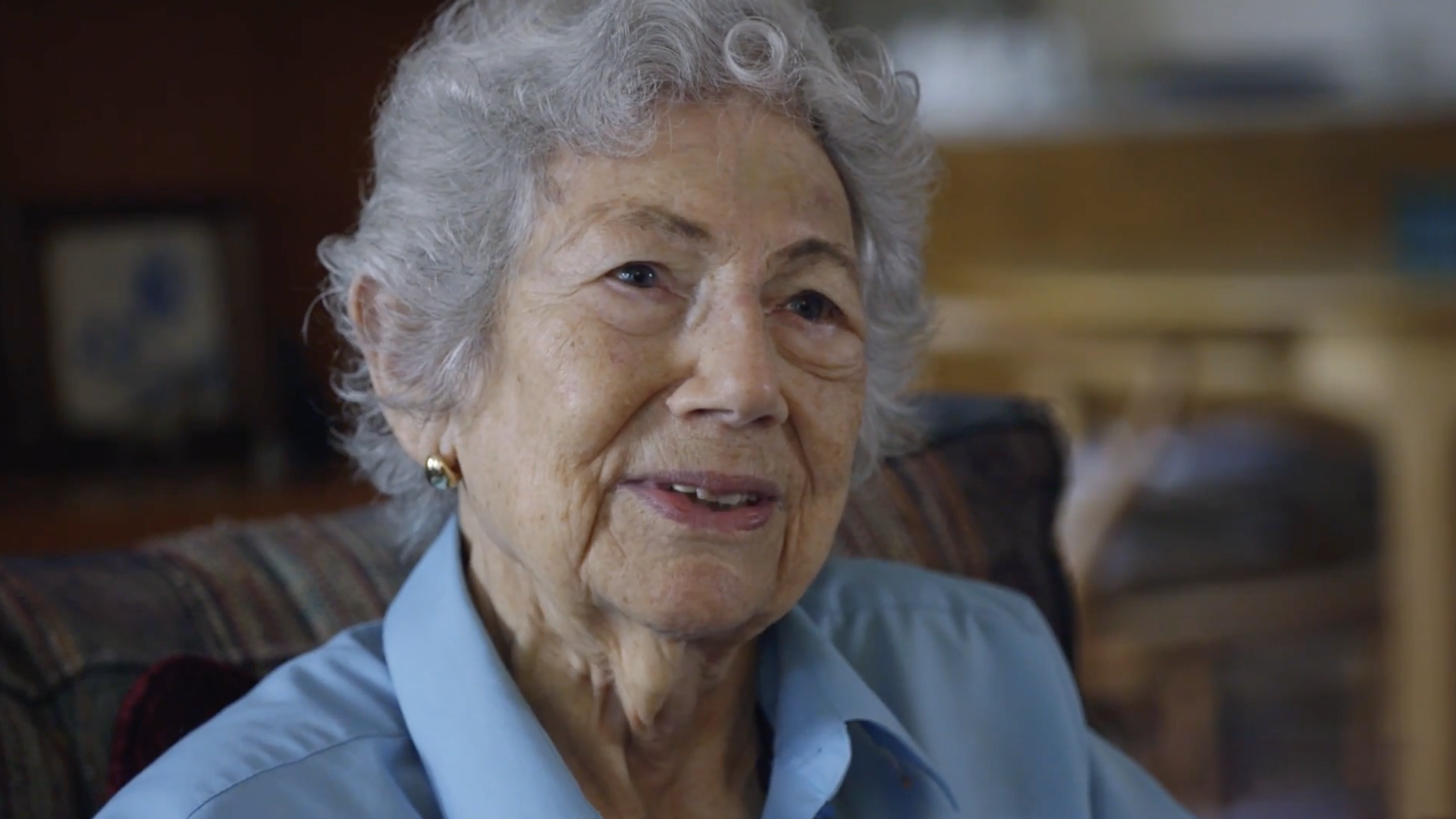
But we learned later that E. coli and all cells including human cells, have developed repair mechanisms that can in various ways, take care of that damage and get rid of it, one way or another. There are a number of different ways to do it. And usually, they work very efficiently and the damage just goes away and the replication continues. And that happens, as I say, in a number of ways.
For instance, if you shine visible light on the E. coli after it’s been damaged by ultraviolet that will take care of getting rid of the damage. The visible light splits that lump that’s sitting on the DNA and makes it go away. So that’s an immediate repair. And then there’s another repair mechanism that’s called the “cut and patch” mechanism. Actually, excision repair. Which detects the damaged spot, cuts one strand of the DNA on one side of the damage, cuts on the other side, and thereby removes a small piece of the DNA containing the damage. And that leaves a gap, see, DNA has two strands, so there’s one strand that’s still in tact and the other one has a piece taken out of it by this cut and patch mechanism. And another enzyme comes along and fills in that patch, using the information on the other strand to do it accurately. So that’s another repair mechanism that acts very quickly and that takes care of most of the damage that happens.
But sometimes, there’s a kind of damage that cannot be easily repaired by these mechanisms. And that’s when the SOS response happens. So here you have damage sitting on the DNA which the visible light couldn’t help and the cut and patch couldn’t help for some reason, and then what happens is the stalled replication, the place where the replication has stopped, generates a signal that says “SOS!” Basically. And then a number of things happen, and I can’t really describe them in great detail, but the two strands of DNA come apart into a sort of bubble and that’s the signal for the SOS system is single stranded DNA, which normally doesn’t occur in the happily replicating DNA. But the single strands bubbling out cause another molecule to come and bind those single strands. And that sets off a sequence which leads to turning on 43 genes.
You know, there were a lot of people involved in that, and I haven’t mentioned all the people, but the SOS response was a joint work. And this was a young man, whose name was Miroslav Radman, he was a postdoctoral fellow at Harvard and I had written a paper in which I suggested that ultraviolet light was inducing two different consequences in a similar way that seemed as if they were being induced together. And Radman a few years later, had linked to other ultraviolet effects and suggested that they were both induced by the same signal.
And one of them was the same one that I had linked, so we both linked A, I had linked it to B, and he had linked it to C. And when we met, I guess it was in 1972, he had just described his end of it. And we met and we put together this observation that I had linked two events that were caused by UV and said that they were induced together, and he had linked two others, and one of them was the common one. So there we had three different ultraviolet effects that we thought were induced in a common way by a single signal. And that was really the beginning, and by the way, Radman was the one who introduced the term “SOS.” And it was used in the sense ofthe international distress signal.
So in a way, our putting together our two separate pieces of this began the SOS response to be appreciated. It was a great joy to be a part of the group that was working on DNA repair. I mean, it was a small international group, there must have been probably I’d say 30-35 individual scientists and the group of students around them and so on, who were trying to understand how the DNA changes and how it’s repaired and all of that.
And being part of that group was one of the most joyful experiences I ever had in science, because it was a group of people with a very common set of goals and I sometimes hear these days that there’s a lot of competitiveness in science. It doesn’t ring a bell with the way it was in my experience, at all. We shared our information, we shared our strains, we cheered for each other when somebody made an important discovery, and it was a human experience that was extremely satisfying. And when I look back at my work, that’s a big part of why I’m glad I did science.

